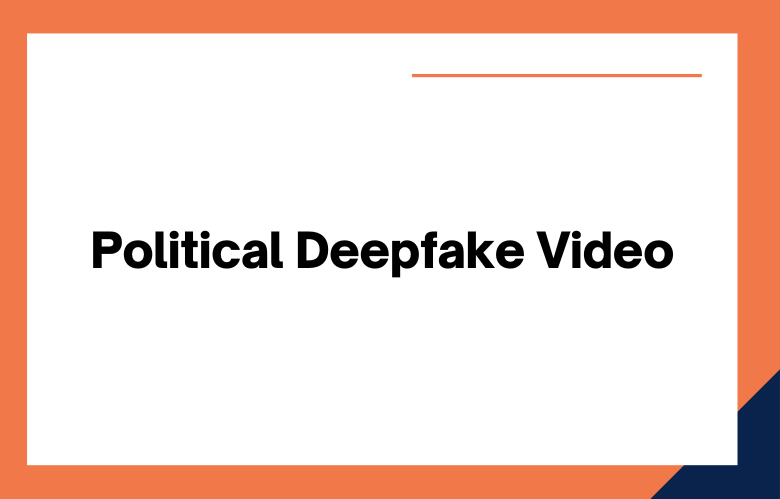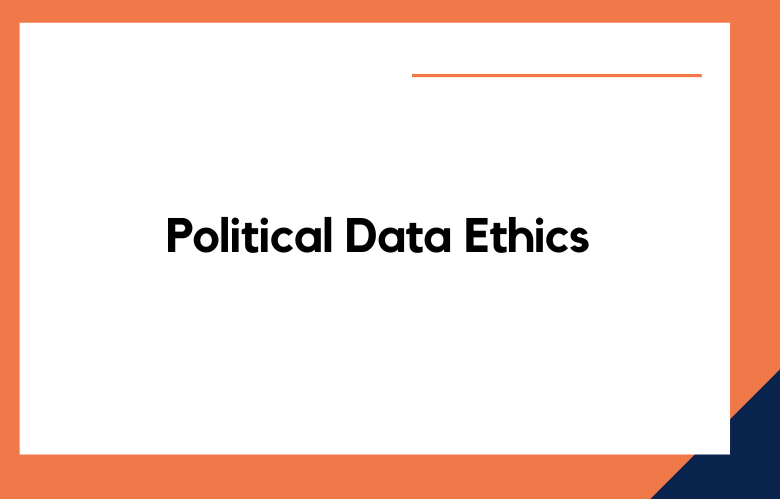With the rise of Deepfake videos, it has become increasingly important for individuals and organizations to find ways to prevent the spread of these videos. We will discuss some ways you can protect yourself from Political Deepfake videos. We will also highlight some steps organizations can take to protect themselves from being targeted by Deepfake videos.
As technology strengthens, so does the ability to create fake videos or “deep fakes.” These videos are created by combining and editing existing footage of a person with audio of that person’s voice.
The result is a video that looks and sounds like the person in question but is a fabricated clip. While this technology has been used for harmless purposes, it has recently been harnessed for more nefarious means.
Deepfake videos can now be used to spread disinformation and misinformation online, potentially influencing elections or resulting in other serious consequences. Therefore, we must find ways to prevent the spread of these videos before they do even more damage.
What is a deepfake video, and how is it created?
A deep fake video is a type of synthetic media in which a person can realistically depict as saying or doing something they did not say or do.
A deepfake video can create by using artificial intelligence to superimpose someone’s face onto another person’s body in a video.
Deepfake videos are realistic human images that can generate by artificial intelligence. They can be used to create fake news stories or to spread disinformation. The technology is still relatively new, but it’s evolving quickly.
To create a deepfake video, you need access to a lot of actual footage of the person you’re trying to impersonate. You also need powerful computing resources to train the AI model. Once the model introduces, it can generate new images and videos that look strikingly realistic.
Deepfakes are videos that can create for artificial intelligence purposes.
It is super easy to make a deepfake.
There are many ways to create a deepfake, but the most common way is to use an open-source face-swapping tool.
This tool can be available online and is free to use.
Once you have the tool, you need a video of the person you want to deepfake and two minutes of their time.
A deepfake video is a digital video that can alter using artificial intelligence to make it appear like a different person is saying or doing something. The technology behind deepfakes is still relatively new, but it is constantly evolving and becoming more sophisticated.
A deepfake is a video created using specialized software to graphically superimpose one person’s features onto another person’s body.
The process begins with taking images and videos of the target person and feeding them into the artificial intelligence software. After that, training the software to create a realistic composite of the two people is just a matter of training the software.
What is Political Deepfake Video?
Deepfake videos are a kind of synthetic media in which a person’s face can superimpose onto another person’s body with artificial intelligence software. Commonly, deepfake videos will depict celebrities or public figures in controversial or humorous situations.
Although deepfakes can use for positive purposes, such as creating realistic pro-environment PSAs featuring celebrities, they can also use for malicious reasons. In 2018, a convincing fake video of the US’. Politician Nancy Pelosi went viral; the footage makes it appear she was slurring her words.
There is growing concern over the spread of political deepfake videos and their potential to influence public opinion as technology becomes more sophisticated.
Political deepfake video is a term you may be hearing more and more as we enter the uncharted digital territory.
It refers to synthetic media in which a person’s face is superimposed onto another person’s body to create a false impression.
With the advent of increasingly sophisticated technology, deepfakes are becoming harder and harder to spot.
It presents a significant problem, particularly regarding political disinformation campaigns.
So far, deepfake videos can use to create fake news stories and to spread misinformation during elections.
As this technology moves further, we can only imagine the potential misuse that could occur globally.
In short, political deepfake video is a type of AI-generated fake news. By manipulating audio and video footage, malicious actors can create real videos of people saying and doing things they never said or did. This content is hazardous because the design was to mislead and exploit viewers for political gain.
Deepfake videos are artificial intelligence that can superimpose one person’s face onto another person’s body. This technology often creates realistic yet fake videos of people saying or doing things they never said or did. Political deepfake videos are becoming increasingly common and are used to spread misinformation or discredit an individual or political party.
Deepfake videos are a new type of political video taking the internet by storm. Created using AI and Deep Learning, these videos can realistically recreate anyone’s face, allowing for potential political seats to be filled by anyone, regardless of their qualifications.
This new technology is both impressive and slightly troubling, as it raises questions about the future of democracy and the potential for misuse.
Political deepfake videos are fake news created by superimposing people’s images and videos onto other pictures and videos. They can use to create fake news stories or election propaganda. Deepfake videos usually look realistic, but there are some telltale signs that they are not real.
A deepfake video is a digital manipulation of footage to make it appear that a person said or did something they didn’t say or do.
Political deepfake videos are becoming increasingly prevalent and can have damaging consequences.
Deepfake videos will use to spread disinformation, sow division, and undermine trust in democratic institutions.
Spotting a political deepfake video is essential, so you aren’t fooled by one.
The dangers of deepfake videos and the potential for misuse
As deepfake technology gets increasingly sophisticated, the potential for abuse grows. Deepfake videos will use to create false information or to distort the truth. It poses a danger to society.
Internet users are now facing a new threat: deepfake videos. These videos can create using AI and deep Learning algorithms to realistically superimpose one person’s face onto another body, making it appear as if the person is saying or doing things they’re not.
This technology is, however, in its primary stages but progressing quickly. And as with any new technology, there are always concerns about how it could be misused.
Deepfake videos are dangerous because of their potential for misuse. For example, these videos could use to create fake news stories or to spread misinformation. Additionally, deepfake videos could use to bully or harass individuals.
As artificial intelligence becomes more sophisticated, so do the tools available for creating fake videos, known as “deepfakes.” While deepfake videos can use for peaceful purposes, such as generating realistic character animations for movies or video games, they can use to create false and misleading videos with ease. It poses a severe danger to both individuals and society as a whole.
As artificial intelligence becomes more sophisticated, so do the tools available for creating fake videos, known as “deepfakes.” While deepfake videos can use for peaceful purposes, such as generating realistic character animations for movies or video games, they can also easily create false and misleading videos. It poses a severe danger to both individuals and society as a whole.
Deepfake videos can be incredibly realistic. And that’s why they’re also incredibly dangerous. If these videos were to fall into the wrong hands, they could be used to spread false information or to create targeted scams.
That’s why it’s necessary to be aware of the dangers of deepfake videos. And if you come across one, exercise caution and report it to the proper authorities. We hope to counter the misuse of this powerful technology by working together.
As deepfake videos become more realistic, the potential for misuse grows. Deepfakes can spread false information or create damaging or embarrassing videos of people without their consent. The potential implications of deepfake technology are far-reaching and concerning.
The implications of deepfake videos on politics and democracy
The impact of deepfake videos is far-reaching and concerning. If political leaders and other public figures can convincingly impersonate in videos, it could undermine trust in democracy and the political process. This technology could use to spread disinformation and sow discord.
The implications of deepfake videos on politics and democracy are profound. Creating realistic, convincing videos of people saying and doing things they have never said or done is now possible.
This technology can be used for good but can also spread disinformation and incite violence. As we continue to develop, we must be aware of the dangers it poses to our societies.
Implications of deepfake videos extend beyond politics. They have the potential to upend democracy as we know it. How can we make informed voting decisions if we can’t trust what we see?
This technology could erode the public’s trust in the government and the media. It’s not difficult to think of a world where fake news has become even more prevalent than it is today.
Deepfake videos have the potential to upend politics as we know it. They could use it to create false stories about candidates or sow mistrust in the political process. In a worst-case scenario, deepfake videos can use to manipulate election outcomes.
It is a threat to democracy that must take seriously. We must find a way to mitigate the dangers of deepfake videos before they are used to do irreparable damage.
As deepfake technology becomes more sophisticated, the potential for its misuse grows. Deepfake videos could manipulate public opinion, interfere in elections, or spread false information. The impact of deepfakes on democracy and politics is still unknown, but the potential for misuse is cause for concern.
The implications of deepfake videos are far-reaching and complex. They have the potential to upend traditional ideas about politics and democracy. As more and more videos circulate, it becomes increasingly difficult to know what is real and what is fake. It creates a sense of mistrust and confusion. Deepfake videos have the potential to impact the outcome of elections, sway public opinion, and undermine faith in democracy. As we grapple with this new technology, it is essential to consider the implications of deepfake videos on our society.
Deepfake technology is becoming increasingly realistic and sophisticated. As a result, the implications of deepfake videos on politics and democracy are becoming more significant.
This technology could create false videos of politicians that could discredit or damage their careers. In the hands of a malicious actor, deepfake videos can use to sow discord and confusion or even sway an election.
As deepfake technology becomes more widespread, it is essential to consider the potential implications for politics and democracy.
Ways to prevent the spread of deepfake videos
- Deepfake videos are often easy to spot because of poor lighting or incorrect facial expressions.
- If you’re unsure whether a video is real or fake, research online to see if others have shared the same opinion.
- Report any deepfake videos that you come across on the social media platform on which they host
- Be aware that deepfake videos can be used for malicious purposes- for example, to spread false information or to discredit someone’s reputation.
- If you’re worried about being targeted by a deepfake video, consider using software to detect them.
- Please discuss this with your friends and family about deepfake videos, so they know how to
- Deepfake videos combine images and videos of two or more people to create a new, fake video.
- The technology behind deepfake videos is becoming increasingly sophisticated, making them harder to detect.
- Deepfake videos can use to spread misinformation and sow discord among groups of people.
- There are several ways to prevent the spread of deepfake videos, including education, verification tools, and legislation.
- Deepfake videos are often easy to spot because of poor editing and unrealistic facial expressions.
- If you’re ever unsure about the authenticity of a video, do some research online to see if other people are also questioning its legitimacy.
- Report any deepfake videos that you come across to the appropriate authorities.
- Enlighten yourself and your friends and family about deepfake videos, making them less likely to be fooled.
- Be aware of what information you share online- deepfake videos can make using just a few photos or videos of someone.
- Keep your computer software up-to-date to reduce the risk of being hacked
- Deepfake videos can create with publicly available tools, so it’s essential to be aware of these tools and how they can use
- Be skeptical of any video that seems too good to be true- if it looks like a celebrity or politician is saying something they wouldn’t usually say; it’s likely a deepfake
- Report any deepfake videos you see to the appropriate authorities
- Enlight yourself and your friends and family about deepfakes so that they’re less likely to fall for them
- Support organizations that are working to combat the spread of disinformation online
- Stay informed about the latest news on deepfakes and other forms of disinformation
- Deepfake videos can often create with software that can easily download online, so make sure you’re using reliable security software and updates
- Be aware of the signs that a video may be a deepfake- for example, if the person in the video looks different than they usually do or if the audio doesn’t seem to match up with the visuals
- Don’t share deepfake videos without verifying their authenticity first
- Report any deepfake videos you see to social media platforms or law enforcement agencies
- Educate yourself and your family about deepfakes and how to spot them
- Support efforts to create better technology that can detect deepfakes
- Deepfake videos are often brutal to see, so it’s essential to be vigilant about verifying the sources of any information you receive
- Educate yourself and your family about deepfake videos and how to spot them
- Report any suspected deepfake videos to the appropriate authorities
- Be aware of what you share on social media- don’t post anything that could use to create a deepfake video
- Support organizations that are fighting against the spread of disinformation and fake news
- If you see a deepfake video, don’t share it- this will only help to spread it further
- Deepfake videos are often difficult to detect, but some clues can help you determine if a video is fake or not
- Do your research before sharing any videos on social media- make sure you know where they came from and who made them
- Report any deepfake videos that you see to the appropriate authorities
- Educate yourself and others about deepfake videos- the more people know about them, the less likely they are to be fooled by them
- Be vigilant when watching online content- don’t just believe everything you see without verifying it first
- Deepfake videos combine images and videos of different people to create a new, fake video.
- The technology behind deepfake videos is becoming increasingly advanced, making it difficult to detect whether or not a video is genuine or fake.
- Deepfake videos can spread false information and propaganda and harass and intimidate people online.
- There are several ways to protect yourself from deepfake videos, including using an ad blocker, verifying the source of a video before watching it, and being aware of the signs that a video may be fake.
- It is important to remember that deepfake videos are still rare.
- Deepfake videos combine images and videos of two or more people to create a new, fake video.
- These videos can use to spread misinformation and disinformation online.
- There are several ways to stave off the spread of deepfake videos, including verifying the source of the video before sharing it, using software that can detect deepfakes, and being aware of the signs that a video may be fake.
- It is important to remember that not all deepfake videos are easy to spot, so it is essential to use caution before sharing any video online.
- Deepfake videos are often made to look like actual footage, making them difficult to detect.
- However, some ways to distinguish deepfake videos from the real thing.
- One way to tell is by looking at the lighting in the video deepfake videos tend to have a more artificial look.
- Another giveaway is if there are any inconsistencies in people’s facial expressions or movements in the video.
- You can also check to see if the audio has been tampered with- deepfake videos often have altered or added sounds that don’t match what’s happening onscreen.
The future of deepfake videos
You may see movies, television shows, and even fake news. This technology, called deepfake, uses so-called computer vision algorithms to manipulate images and videos to falsify what is happening in the scene. So those films may seem natural, but they can create on the computer.
Fake videos will not label as such, and people will not realize they are not authentic. YouTube criticizes for hosting deepfake videos that give people fake plastic surgery makeovers (called “photoshop wannabe”) or make them look younger with more appealing bodies. The potential of this technology to impact elections spread disinformation, and influence people’s behavior is growing.
Videos could blend with real-life scenes through artificial intelligence techniques that generate real-looking videos of people saying and executing things they never actually said or did.
More and more videos will create through technology. But many of these videos will be fake, known as “deepfakes,” made through sophisticated video-editing software and artificial intelligence technology that can mimic the real-world appearance of persons and things.
Knowing if the video is real or fake will be nearly impossible.
Deepfake videos and audio will fool everyone. Imagine a video of a politician saying one thing even though the politician said something else. Deepfake videos will use for political gain, and this is a concern over the future of democracy.
Inevitably, deepfake videos will dominate today’s mass media. This technology emerged thanks to machine learning and artificial intelligence. People can use this novel technology to create all types of videos using blurring and warping technology to transform a state-elected individual face to look like an actor or actress. Besides surprising politicians and political figures, deepfake videos may also impact the movie and TV industry as this is a risk to their viewers and producers. In addition, this kind of technology can use for various illegal activities by adding offside to create threatening fake videos.
Deepfake videos will manipulate using artificial intelligence to make it look like someone is saying or executing something they never actually said or did.
Although the technology behind deepfake videos has been around for a few years, it has only recently begun to gain mainstream attention. It is mainly because AI-generated videos are becoming increasingly realistic and challenging to distinguish from actual footage.
There are several potential applications for deepfake videos. Some people believe they could use it for entertainment, such as creating fake celebrity porn or spoofing movies and TV shows. Others think they could use it for more nefarious purposes, such as spreading disinformation or interfering in elections.
Deepfake videos will manipulate using artificial intelligence to make it look like someone is saying or doing something they didn’t.
Although deepfake videos are currently used for comedic purposes, there is the potential for them to use for more sinister purposes in the future. For example, they could be used to spread false information or to blackmail people.
There are several ways to detect deepfake videos, but they are becoming increasingly sophisticated, and it may not be possible to tell them apart from natural videos.
Conclusion:
Deepfake videos are a significant concern for not just the individual but also society as a whole.
Deepfake technology has the potential to completely upend our democracy if it falls into the wrong hands.
We must stave off its spread and protect ourselves from its dangers.
If you’re interested in helping us fight against deepfakes, please don’t hesitate to contact us.
We offer political strategy consulting and would happily put our skills to work protecting your community from this malicious technology.
One way to get in touch is by filling out our online form on this site or give us a call at
+91 9848321284. Let’s work together today!











